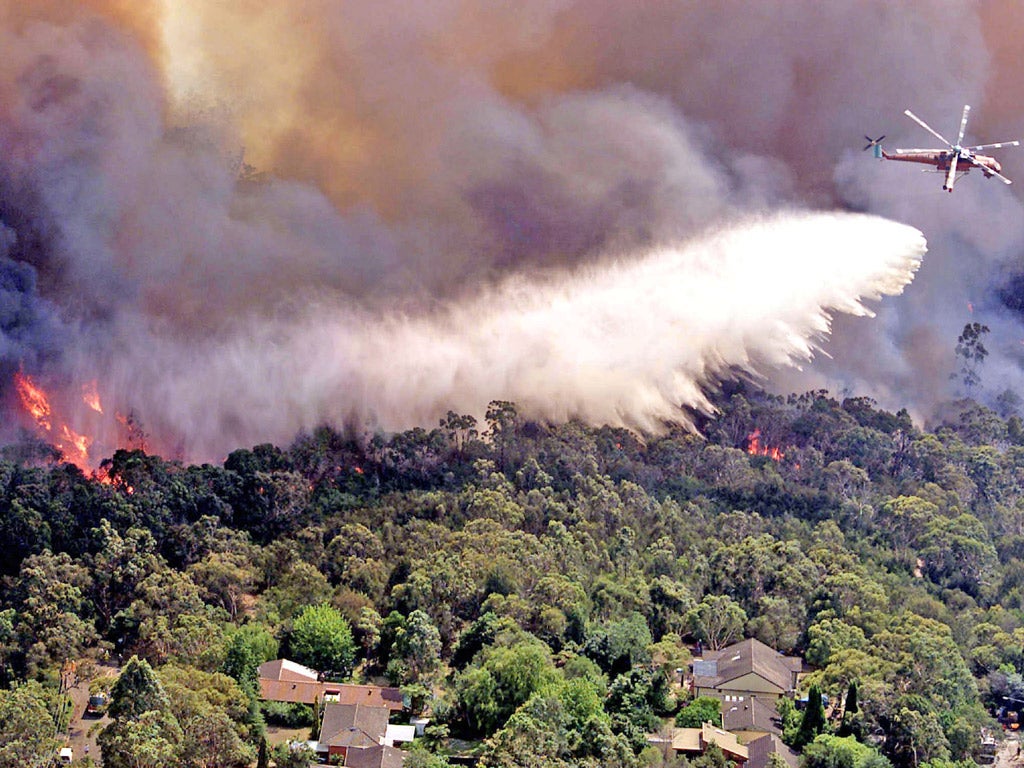Debate rages over best method to fight devastating bush fires

Leading the way through the charred ruins of his family home near Margaret River, in Western Australia, Tim Moore pauses by a small pile of charcoal.
"This was a beef curry I'd just made," he says, nudging it with his boot. "It was in the fridge, along with a week's worth of bolognaise."
When Mr Moore, originally from Perth, moved here 20 years ago, he knew that the thickly vegetated area was prone to bushfires. What angers him about the blaze that destroyed his house is that it was set deliberately – and not by arsonists, but by the state government's fire protection agency.
The fire started out as a "controlled burn" – a procedure aimed at incinerating the layers of dry undergrowth which can fuel a destructive bushfire. Lit in a national park six miles north of Gnarabup, a coastal township where Mr Moore lives with his two children, it "escaped" on an unseasonably hot spring day and roared down the coast, burning down 41 properties.
Although no one was killed or injured, the disaster revived a long-standing controversy in Australia, the world's most flammable continent, about the wisdom of fighting fire with fire. A public inquiry into the blaze concluded in December that the agency responsible, the state's Department of Environment and Conservation, had underestimated the risks involved.
Like many Australians who live in fire-prone areas, Mr Moore believes he could have saved his home. "I've got stacks of fire knowledge and expertise," he laments. "My house was very easily defendable."
Controlled burning is supposed to emulate the frequent, low-intensity fires which were lit by Aborigines, in order to stimulate edible plants, flush out prey such as kangaroos and reduce the wildfire risk. However, critics say that modern practice – which involves torching vast tracts of landscape by dropping incendiary pellets from a helicopter – is very different from ancient fire regimes.
Some fire scientists question whether the practice significantly reduces the risk of catastrophic fires, such as those which ravaged Victoria in 2009, killing 173 people. And although Australian plants and animals have evolved with fire, and in some cases even need it to regenerate, environmentalists argue that many species cannot tolerate being burnt so often. One of Australia's leading fire scientists, Kevin Tolhurst, believes that fire control agencies rely too much on "fuel reduction", which he describes as "a really important thing, but ... over-hyped as to what it can achieve".
Dr Tolhurst, a senior lecturer in fire ecology and management at the University of Melbourne, says that the effects of controlled burning are mainly seen in mild weather, rather than in the extremely hot, dry, windy conditions usually associated with mega-fires. He also warns an over-emphasis on burning can distract from the need for better planning, house design and communications.
However, others disagree, and after the Victoria bushfires the finger was pointed at environmentalists, who were described by David Packham, former principal bushfire scientist with the CSIRO, the federal government's scientific agency, as "eco-terrorists waging jihad" against controlled burning.
A lobby group called the Bush Fire Front, which was set up by a group of retired senior foresters in Western Australia, is also predicting dire consequences unless the burning programme is "greatly expanded". The Front's chairman, Roger Underwood, deplores a backlash against DEC's staff, who have stopped wearing their uniforms after being hissed at and abused in the Margaret River shops.
"DEC's been looking after their fire safety for years, doing all the dirty work," says Mr Underwood. "They make one mistake and are crucified for it."
Both sides of the debate call for stricter planning controls to reduce the bushfire risk. David Bowman, professor of forest ecology at the University of Tasmania, says of the Australian bush: "These are flame forests. Do you really want to live there?"
Join our commenting forum
Join thought-provoking conversations, follow other Independent readers and see their replies
Comments
Bookmark popover
Removed from bookmarks